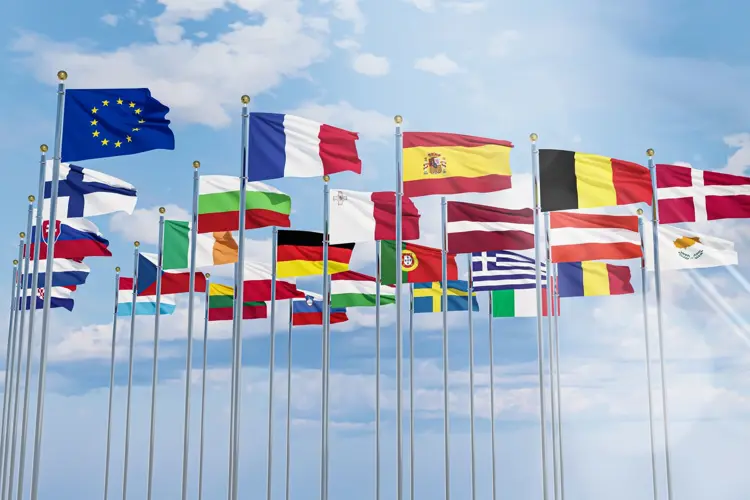In what is almost certainly a preview of policies that will be urged at the fall meeting of the World Health Organization's Framework Convention on Tobacco Control (FCTC), the WHO has issued a report on “new and emerging” tobacco and nicotine product use that encourages countries to adopt harsh anti-vaping and anti-harm reduction positions.
There is literally nothing new in the report. It’s the usual set of complaints and lies about vaping, and a reupping of the evergreen list of excuses for the WHO’s own feeble anti-smoking progress. Worldwide tobacco control efforts would be going swimmingly, the WHO says, except for those darn tobacco and “related” companies’ attempts to reverse the progress by encouraging uptake of non-combustible nicotine products like vapes (which, as usual, are called ENDS).
Vaping products contain nicotine, they explain, which may affect adolescent brain development. They’re marketed in thousands of flavors, which “can increase the palatability of the product and help them be targeted specifically at children and young adults.”
“Eighty-four countries still have no bans or regulations to address ENDS, leaving them particularly vulnerable to the activities of the tobacco and related industries,” says the report. Adolescents who vape, according to the WHO, are “more than twice as likely to later use conventional cigarettes.” (That has certainly not borne out with real live teenagers in the United States, where school-age smoking has fallen dramatically as teen vaping increased, and high schoolers smoked more in the only U.S. city with a total vape ban.)
The report was funded by Bloomberg Philanthropies, the foundation started by American billionaire and former New York City mayor Michael Bloomberg. Not coincidentally, Bloomberg has been appointed the “WHO Global Ambassador for Noncommunicable Diseases and Injuries”—a largely honorary title granted in recognition of the money he spends on tobacco control and other health policy efforts.
Bloomberg Philanthropies has spent billions funding the spread of prohibitionist dogma in countries around the world. In low- and middle-income countries (LMICs), Bloomberg-funded groups like the Campaign for Tobacco-Free Kids and The Union have urged outright bans on e-cigarettes, claiming those countries are incapable of properly implementing reasonable regulations.
In theory, the WHO and FCTC exist to create and promote health strategies demanded by member states. In reality, WHO tobacco policy goals and plans come from the top down. Bloomberg-sponsored Tobacco-Free Kids and its allies essentially run the WHO’s tobacco control operations as a subsidiary. It is those groups that will plot the recommendations the FCTC will present to member countries at November’s ninth Conference of the Parties (COP9) in the Netherlands.
With the promise of endless Bloomberg dollars, the WHO and FCTC aren’t even fearful of losing the support—and maybe funding—of the FCTC Secretariat’s largest donor: the government of the United Kingdom. A report issued by a UK Parliamentary study group earlier this year encouraged the British government to consider “dramatically scaling back” its funding of the WHO and FCTC if the international organizations don’t reconsider their opposition to vaping and tobacco harm reduction as an anti-smoking strategy.
But the WHO isn’t budging. “Nicotine is highly addictive. Electronic nicotine delivery systems are harmful, and must be better regulated,” said WHO Director-General Tedros Adhanom Ghebreyesus in a statement today.
Worldwide, smoking hasn’t declined since the launch of the FCTC nearly two decades ago. Indeed, the number of people who currently smoke (1.1 billion), and the number who die annually from smoking (eight million), has increased in that time.
It is in countries where low-risk nicotine products like vapes and snus are allowed that smoking rates have dropped the farthest and fastest. Only if you convince yourself that non-combustible nicotine products pose the same risks as cigarettes can vaping be considered the danger the WHO and its patron Bloomberg say it is.
“This report demonstrates that, sadly, the WHO still doesn’t understand the fundamental difference between addiction to tobacco smoking, which kills millions of people every year, and addiction to nicotine, which doesn’t,” said University of Nottingham Emeritus Professor of Epidemiology John Britton, who chaired the Royal College of Physicians’ Tobacco Advisory Group that produced that group's landmark 2016 report on e-cigarettes.
“The WHO is also evidently still content with the hypocrisy of adopting a position which recommends the use of medicinal nicotine products to treat addiction to smoking, but advocates prohibition of consumer nicotine products which do the same thing, but better.”
The Freemax REXA PRO and REXA SMART are highly advanced pod vapes, offering seemingly endless features, beautiful touchscreens, and new DUOMAX pods.
The OXVA XLIM Pro 2 DNA is powered by a custom-made Evolv DNA chipset, offering a Replay function and dry hit protection. Read our review to find out more.
The SKE Bar is a 2 mL replaceable pod vape with a 500 mAh battery, a 1.2-ohm mesh coil, and 35 flavors to choose from in 2% nicotine.
Because of declining cigarette sales, state governments in the U.S. and countries around the world are looking to vapor products as a new source of tax revenue.
The legal age to buy e-cigarettes and other vaping products varies around the world. The United States recently changed the legal minimum sales age to 21.
A list of vaping product flavor bans and online sales bans in the United States, and sales and possession bans in other countries.



















